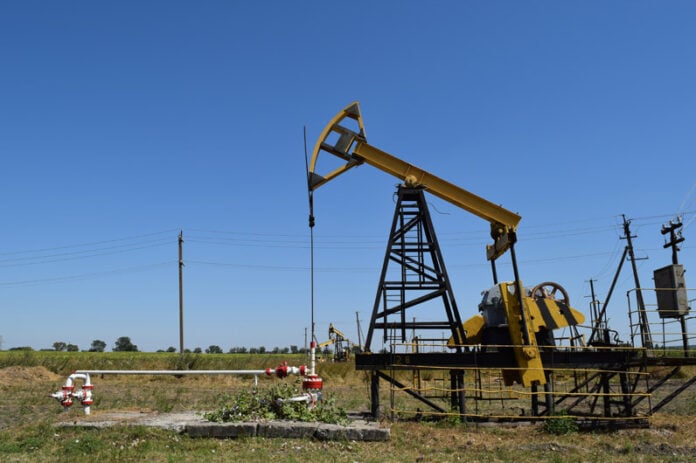The traditional image of drilling for oil and gas historically involves a vertical well drilled deep into the Earth’s crust, where hydrocarbon reservoirs are found.
However, that approach had limitations and, in some cases, inefficiencies.
The solution? Directional drilling.
What is directional drilling?
Directional drilling is a technique used in the oil and gas industry to drill boreholes at multiple angles, not just vertically.
The process allows for better access to underground resources and more accurate targeting of hydrocarbon zones.
This approach opens the possibility to explore and extract oil and gas from previously inaccessible or unviable locations, improving recovery rates and reducing the environmental impact associated with drilling.
The ability to precisely control the borehole’s trajectory and direction also means that drilling can bypass geological obstacles or protect environmentally sensitive areas above the drilling target.
Related: What is Casing in Oil and Gas Drilling?
Types of directional drilling
There are several types of directional drilling techniques, each with its advantages and specific applications:
Horizontal drilling
In this method, the well is initially drilled vertically but gradually bent into a horizontal path.
The resulting wellbore can span thousands of feet horizontally along the geologic formation containing the oil and gas.
This approach allows for better access to hydrocarbons in long, thin reservoirs or scenarios where several reservoirs are located at different depths.
Multilateral drilling
This technique involves drilling multiple wellbores from a single vertical well, creating branches or laterals that extend in different directions and depths.
This approach allows for better reservoir drainage and reduced surface infrastructure, leading to reduced costs and a smaller environmental footprint.
Extended reach drilling (ERD)
This method allows for drilling wells over long horizontal distances, often several miles away from the drilling rig.
ERD wells often have a longer horizontal section than typical horizontal wells and require specialized drilling equipment to handle the stress placed on the drill string and maximize the well’s reach capabilities.
Complex-path drilling
This advanced method involves drilling a well along a non-linear path, allowing for more precise access to oil and gas reservoirs.
Various wellbore paths, such as S-shaped or fishhook-shaped paths, can be used depending on the specific reservoir target and surrounding geological constraints.
This is particularly useful when targeting smaller reservoirs, or when drilling in highly fractured or faulted areas.
Related: 30 Petroleum Engineering Interview Questions and Answers
The benefits of directional drilling
Increased production
By drilling directly into the resource-rich zone, directional drilling can lead to improved hydrocarbon recovery rates.
The extended contact with the reservoir also results in higher production rates.
Access to difficult locations
Directional drilling techniques allow for drilling wells in hard-to-reach and environmentally sensitive areas such as offshore locations, Arctic and deepwater environments, areas with limited surface infrastructure, or reserves that are situated beneath populated areas.
Reduced environmental impact
By drilling fewer wells and using more precise drilling methods, the oil and gas company can reduce the surface footprint of their operations.
Reduced surface infrastructure and fewer wells also mean less land disturbance, protecting local ecosystems and minimizing environmental impacts.
Lower costs
Directional drilling can deliver significant cost savings. By streamlining the drilling process and optimizing hydrocarbon extraction, operators can produce more oil and gas for a lower operational investment.
Optimized well placement
Directional drilling allows operators to position wells more accurately, improving well spacing and drainage patterns.
This can result in a more efficient extraction process that maximizes well performance and extends the life of the reservoir.
Related: Working In the Oilfield | Requirements, Entry Level Jobs and Work Conditions
What are directional drillers?
Directional drillers are responsible for drilling horizontal wells. They usually combine their technical skills and work experience to ensure that the well is drilled as planned and doesn’t deviate from a predetermined path.
Directional drillers work with a team of drilling engineers, geologists, and other professionals to make drilling projects more efficient, safe, and economical.
The primary responsibilities of directional drillers include:
Planning
Directional drillers work with the drilling engineers and geologists to develop a detailed drilling plan that outlines the wellbore path, target zones, and any potential obstacles or geological complications that could be encountered during the drilling process.
Drilling execution
During the drilling process, directional drillers monitor and control the drilling equipment, adjusting the trajectory and path of the wellbore as needed to ensure proper placement.
This involves interpreting real-time data, making adjustments to maintain the correct direction, and addressing any issues that arise during drilling.
Data analysis and reporting
In addition to real-time monitoring, directional drillers analyze drilling data and prepare reports on drilling performance and wellbore path accuracy.
This data may be used to evaluate the success of the project and optimize future drilling operations.
Training and mentoring
Directional drillers often provide training, guidance, and support to other members of the drilling team, ensuring that everyone involved has the knowledge and skills necessary to perform their duties.
How to become a directional driller?
Becoming a directional driller typically requires a combination of education, experience, and skills development.
Obtain a relevant education
While some directional drillers may have started their careers just with on-the-job training, most employers today require a formal education in a relevant discipline, such as geology, earth sciences, petroleum engineering, or mechanical engineering.
Gain experience in the industry
Entry-level oilfield positions, such as working as a mud logger, drilling engineer, or MWD (measurement while drilling) specialist, can help build the necessary skills and knowledge of drilling processes and equipment.
Develop essential skills
Becoming a successful directional driller requires a range of technical and soft skills.
In addition to understanding drilling processes, equipment, and geology, directional drillers must possess excellent analytical, problem-solving, and communication skills.
They must also be able to work with multidisciplinary teams and adapt to changing conditions or challenges.
Read next: Working on a Drilling Rig: Positions and Responsibilities
